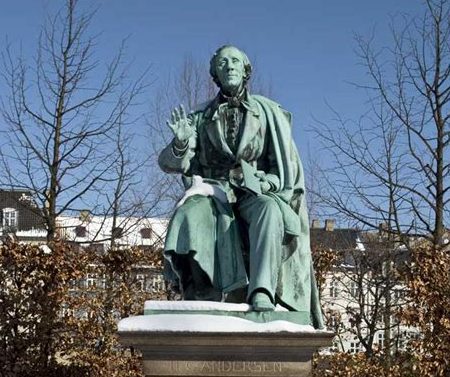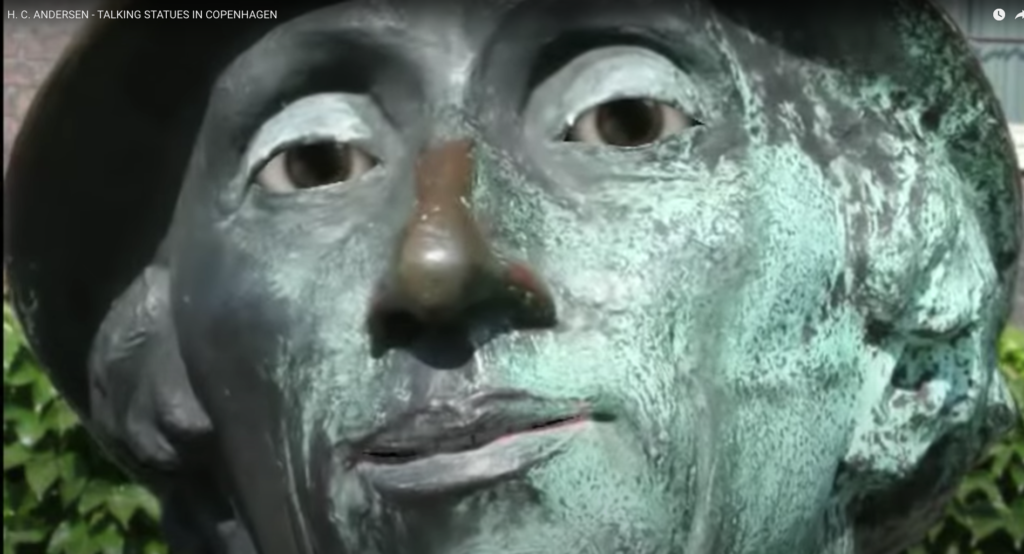About Us
We started in King's Garden in Copenhagen. Today we work all over the world!
Established in 2013 in Copenhagen

Talking Statues started in Copenhagen in 2013 by documentary filmmaker David Peter Fox from Bertha Media. While taking his children through the King’s Garden, Fox was fascinated by the stories behind the statues, and he tried to think of a way to best communicate this to the public.
His original idea was to make small films about each statue but then decided the statues should tell their own stories. In September 2013 Talking Statues debuted its first talking statue of fairytale writer Hans Christian Andersen in Copenhagen’s King’s Garden. It was a huge success, and the project expanded to cities such as Helsinki, London, San Diego, Berlin, New York, and Chicago.
The project Talking statues, which started in Copenhagen today give the opportunity to some of the most prestigious cultural figures from Copenhagen, Helsinki, London, and Chicago a chance to tell their own history to the passersby. With the new modern mobile technique, there is a completely unique opportunity for a new form of dissemination of our heritage in urban space through spectacular live demonstrations around the world: The statues come alive and tell their own stories with accurate human voices. In other words, Copenhagen statues and statues around the world are engaged in the new fantasy of the 21st-century mind and imagination, namely, to make possible the impossible through the latest technology. The first Talking Statues included video animation and can still be seen on YouTube

David Peter Fox got the idea in Kings Garden, which is located in the middle of Copenhagen. Kings Garden is a public park next to the kindergarten that both my children, Alfred Hauch Fox and Leah Hauch Fox, attended. On weekdays, David used to walk through the park with them to take them to kindergarten.
On the way, they saw several statues of historical figures, including Hans Christian Andersen and Queen Caroline Amalie, consort of Denmark, in her beautiful Victorian dress. This led David to wonder how he could tell people the story behind each statue as they passed it by.
David also thought about what the best form of media for this would be. There were several things to consider – it had to be exciting, but it was also important that it was brief and, perhaps most crucially, people had to be aware that the statues could speak.

Taking the project to New York
In 2016, I had the opportunity to take the project to New York. It was a big dream and the project was a success. Still today there are many statues speaking in New York, both in Central Park, in Times Square, on Ellis Island og andre steder. Mere end 40 statuer taler i vores app i New York i dag. Talking Statues has spread to many cities today and although the project was started 10 years ago, it continues to run. The idea is the same as in 2013. The technology has changed a bit, today there is no live animation when you scan the code, only sound.
Creating the first monologues
Since this project was the first of its kind, the whole thing had to be invented from scratch. The first step was to think about what the statues would say if they could talk. I quickly realized that the monologues worked best when they were about two minutes long with subject matter that related to the past, present, and future. When we worked on making monologues, we had to design a whole universe for each statue and research the character of the figure. Then, a new question arose: would the passers-by be able to relate to the figure?
I remember that when we were writing the monologue for the statue of Danish philosopher Søren Kierkegaard, which is located in the Royal Library Garden, we read that he had not liked being photographed. This inspired us to try a monologue in which the statue of Kierkegaard asks passers-by to not take photos and post them on Facebook. It seemed funny in the writing process, but it did not work. It seemed too much – maybe because he was starting to tell people what to do, maybe because it seemed odd for him to talk about Facebook – so we left it out.
Other things we had to consider were how the statues should address the passers-by and whether or not the statue should talk about the present or even the future.
Today, we still use a scriptwriter who writes the text based on historical research. We try to let the figure talk about the highlights of its life. A funny story about the actual statue is also added as we quickly found out humor is an important factor in making people want to listen. We usually say that the text should be about 2-3 minutes long, but it does depend on the story. When the text is finished, we work with an actor to make a recording in a sound studio, insert the soundtrack into the app and, finally, make a sign with a QR code.





